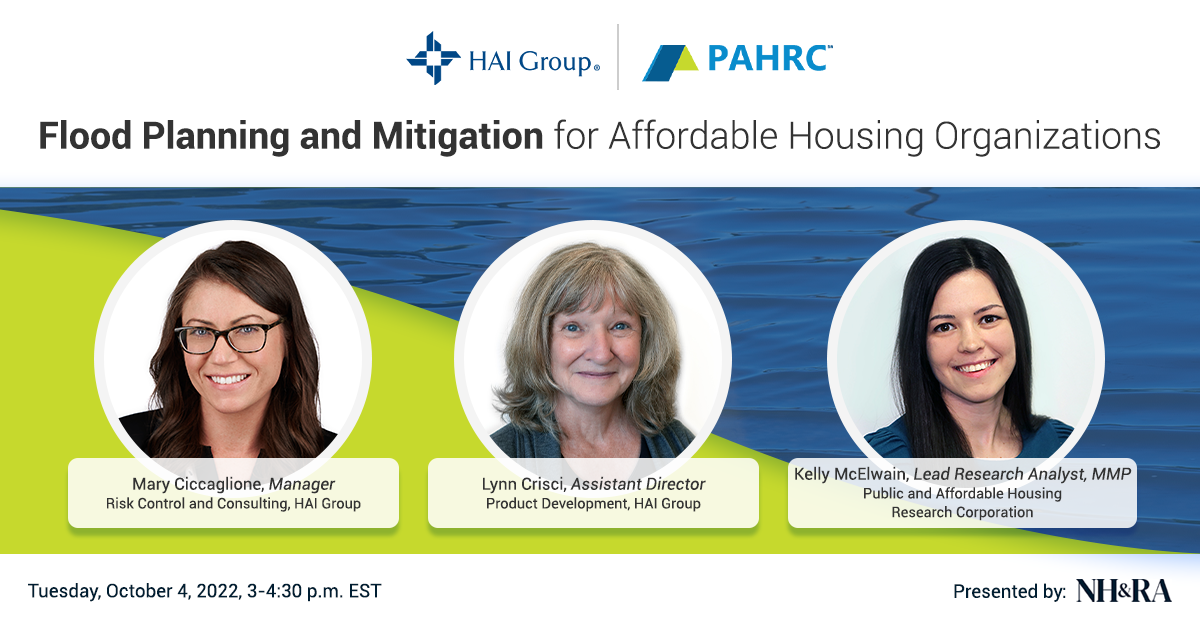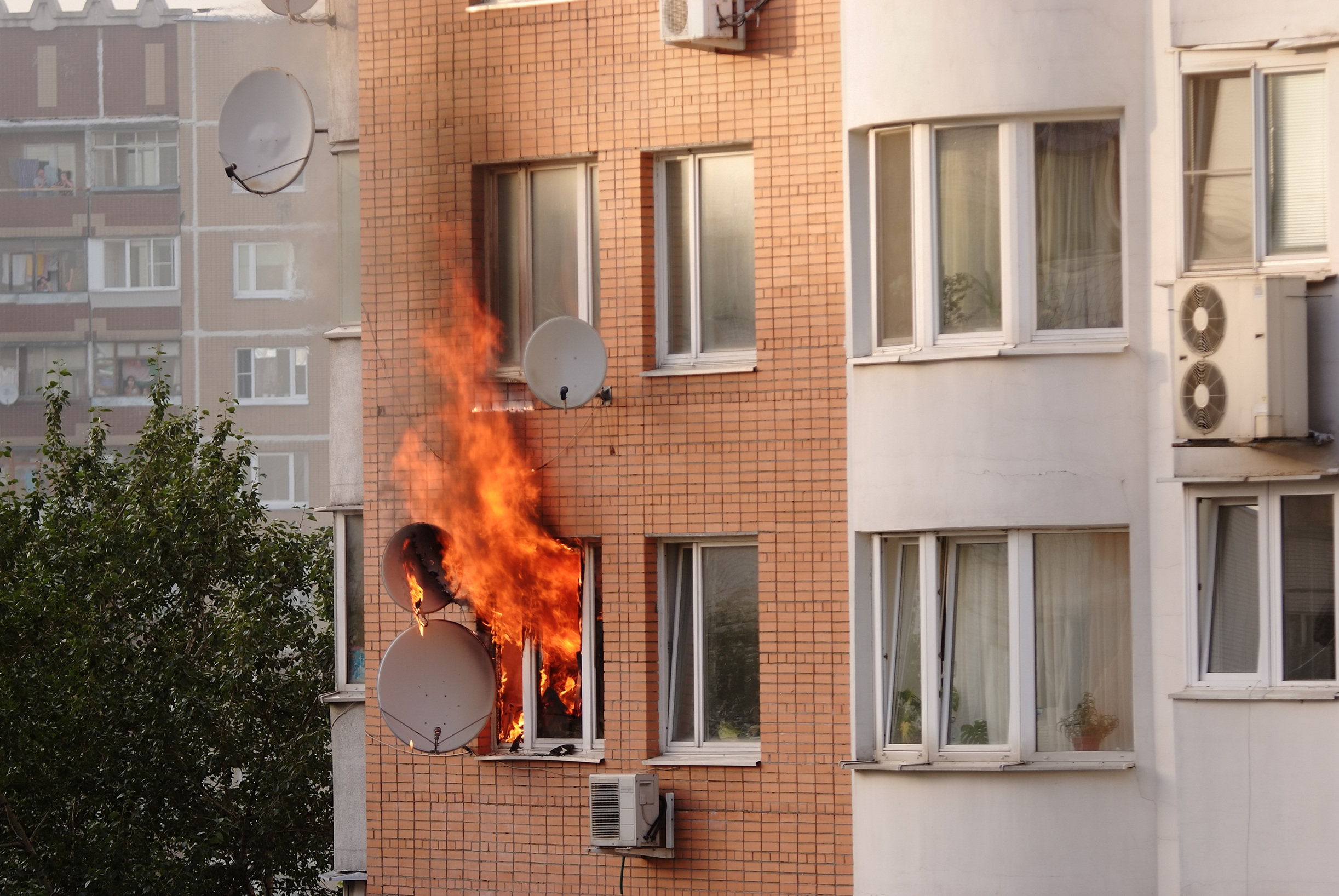Affordable housing provides stability and security—along with a springboard to success—to our country's most vulnerable populations. Here's how to help protect the properties and people who make this essential service possible.
Trend #1: Costs from Damages due to Climate Change Are on the Rise
As those of us in the insurance industry are painfully aware, more frequent and worsening natural disasters are predicted to continue for years. Unfortunately, the multifamily affordable housing industry is especially vulnerable. Affordable housing properties are more likely than market-rate properties to be located in high-risk areas, such as those prone to flooding or tornadoes.
What’s more, rental housing experiences greater damage and recovers more slowly from extreme weather events than owner-occupied housing. This is in part because renters and landlords have fewer incentives to invest in mitigation features and are less likely to receive federal disaster assistance.
Just how bad is it? New research from the Public and Affordable Housing Research Corporation (PAHRC) and the National Low Income Housing Coalition (NLIHC) found that a significant number of multifamily affordable housing properties in the U.S. are at “very high” or “high risk” of adverse impacts due to a natural hazard.
How to prepare
Make sure your affordable housing customers understand the risks that severe weather events can bring. Review the limitations of their current coverage, along with new options that may be available to them, and be sure to insure to value.
“Underinsuring property due to price constraints may seem like a safe bet, but it’s a chance you don’t want to take, since catastrophic property claims have been increasing in frequency and severity over the years,” said Camron Rafiee, assistant director of underwriting at HAI Group. “Too, affordable housing organizations provide homes for some of the nation’s most vulnerable populations. If these organizations are underinsured, they may not have sufficient funds to repair or replace those homes, which may already have been in need of an upgrade.”
Consider also that people who live in affordable housing may not have the funds, or even a vehicle, to see them through a short-term evacuation.
“Residents of affordable housing are especially vulnerable to displacement,” said Dr. Keely Stater, formerly PAHRC’s director of research and industry intelligence. “Even temporary inhabitability can be a big problem.” It’s a good idea to partner with your carrier to craft a policy that addresses this risk.
Helping your clients be proactive in their approach to risk management is also a good move. Encourage them to take advantage of the free training, assessments, and other resources their carrier makes available, since these can go a long way toward helping them reduce the frequency and severity of many incidents. Bonus points if those resources are tailored to the affordable housing industry.
in their approach to risk management is also a good move. Encourage them to take advantage of the free training, assessments, and other resources their carrier makes available, since these can go a long way toward helping them reduce the frequency and severity of many incidents. Bonus points if those resources are tailored to the affordable housing industry.
Finally, ask your clients about their business continuity plans—and then go a step further.
“Agents should confirm that the insurance companies they place business with have their own business continuity plans. If something like a cyberattack or weather event takes out the operation, the insurer should still be able to process a claim,” said Elizabeth Owens, director of risk control and consulting at HAI Group.
Trend #2: A Growing Number of Housing Organizations Are Providing Internet Services to Residents
Across the U.S., the digital divide continues to leave low-income residents behind.
“The pandemic revealed that internet and computer access is an essential utility because it enables people to stay informed and it enriches their education and job prospects,” said Stater. Low-income residents may not be digitally literate, own internet-enabled devices, or know how to keep these tools updated and protected. The good news is that many housing organizations are stepping in to fill the gap.
“We’ve seen more and more affordable housing providers distributing computers and hotspots, organizing community hotspot vehicles, building computer labs, and partnering with internet service providers to provide low-cost internet options to residents,” Stater said.
How to prepare
Consider how residents will use internet services, and whether the buildings you insure are equipped for upgrades like computer labs, buried cables, and the like.
“Make sure computer equipment is properly installed and that it doesn’t damage the building,” said Owens.
You also need to consider your customers’ relationship with their internet service provider. Will the housing organization serve as the utility’s customer or will residents?
“Read contracts with third parties carefully and make sure they go through a legal review,” said Owens. “It’s also a good idea for the organization to provide residents with information about how to install and use parental control apps so they can monitor their kids’ online activities and limit their exposure to the internet.”
Trend #3: Cybercriminals Will Continue to Target Housing Organizations
Even the best-prepared affordable housing organizations are vulnerable to cybercriminals seeking to hold their data and systems hostage in exchange for payment. Since 2016, the U.S. has experienced around 4,000 ransomware attacks daily. And cybercriminals don’t just focus on larger companies—70 percent of ransomware attacks affect businesses with fewer than 1,000 employees.
How to prepare
Even if affordable housing organizations keep their systems patched, manage access to vital assets, use sophisticated antivirus detection systems, and train employees how to spot common cybersecurity attacks, the risk of a breach remains. A housing organization’s non-cyber insurance policy may respond to certain aspects of a cyber breach, such as damaged hardware.
But there are several scenarios non-cyber policies may not cover. That’s why it’s so important that you help your housing organizations assess their existing coverage and address gaps with a cyber insurance policy that caters to their needs.
Trend #4: The Percentage of People Seeking Affordable Housing Who Need Supportive Services is Increasing
Across the U.S., more and more people who need supportive services are opting into affordable/assisted housing.
“Compared to their unassisted peers, these residents tend to have lower levels of educational attainment, higher rates of health conditions, and greater employment barriers,” said Stater. In response, many affordable housing providers are offering services beyond housing, either on their own or by partnering with community-based providers.
How to prepare
If your affordable housing customers offer, or are planning to offer, after-school programs, job training, health services, or other types of services, make sure they have adequate insurance to cover volunteers or other areas of potential risk these services and partnerships bring. Encourage the organization to create a formal agreement with their partners that sets clear expectations and defines roles and responsibilities, and to make sure the partner is insured for the risks they are responsible for.
“Affordable housing providers would do well to choose partners strategically, meaning they should partner with providers that meet the biggest resident needs and then regularly monitor their success. Make sure, too, that they have a funding plan to keep the program going, because residents will come to depend on the service,” said Stater.
Includes copyrighted material from a company under the HAI Group family, with its permission. This post is for informational purposes only and is not intended to provide legal advice, and shall not be relied on as such. We strongly recommend consulting with legal counsel or an appropriate subject matter expert.






